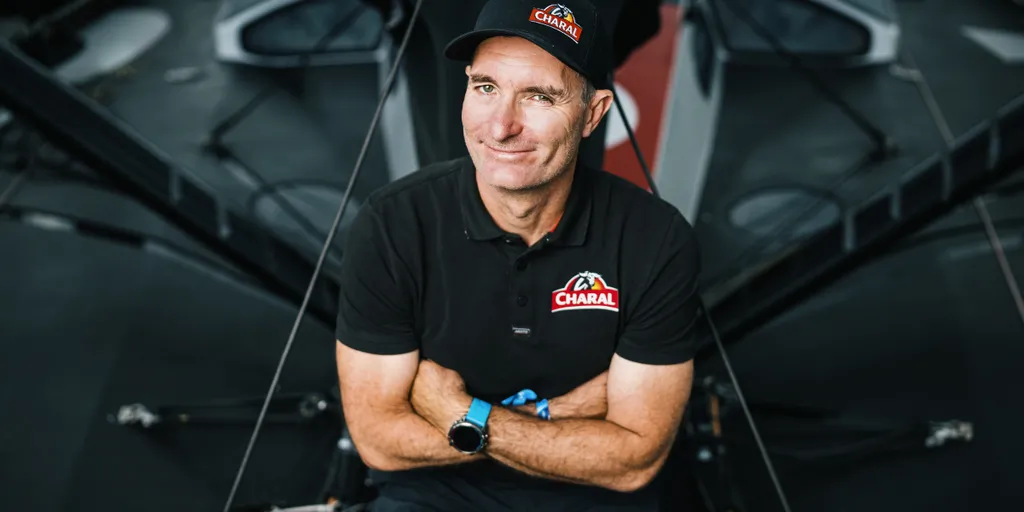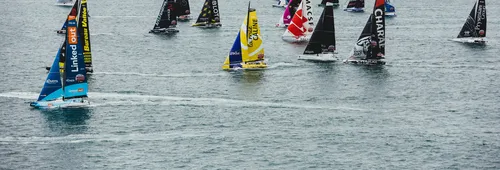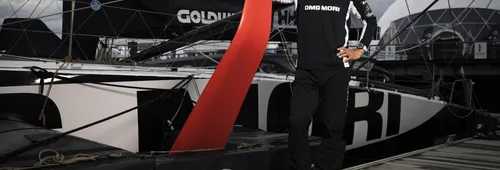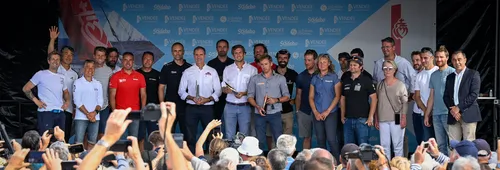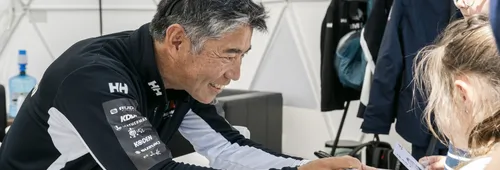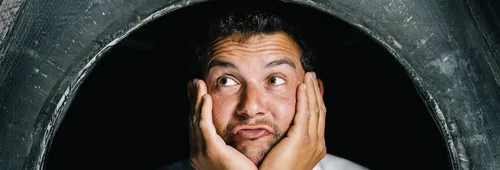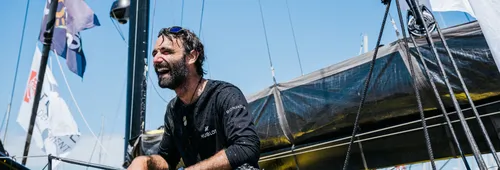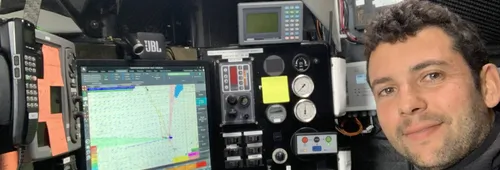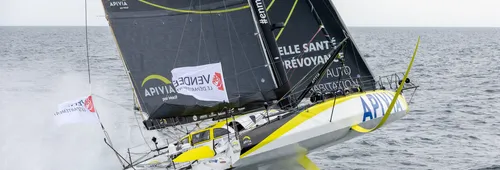The IMOCA sailing season started in May with the Guyader Bermudes 1000 Race. Now here you are at the start of the second Vendée Arctique – Les Sables d'Olonne which now has a full scale race village, thousands of vistors, 25 IMOCAs on the race dock here and an impressive level of competition. It is all going in the right direction with the class?
Jérémie Beyou: In terms of elevating the sporting level it is important for us to race. Above all that’s what we're here for, and it's good to be able to do more and more. This involves getting organized, reducing times in the boatyard, optimising the size of the teams to meet these schedules. But then this is what we want. It is also good for the organizers to have things going on. And the public has an appetite.
And it is interesting for everyone to be going to new and different areas?
J. B.: I'm very happy to go to 70°N. It just has to be doable. The course is engaging, exciting and the race management will be able to make its choices to make it work for the whole fleet, which is quite varied in terms of performance and experience. To make these races work for you you have to keep the boat intact, we only have one boat. You have to be looking after it all the time. We have to have simple races with starts and finishes in the same place.
What are the difficult areas?
J. B.: The main ones are the coastal part of the northern passage across the top of Iceland and the bottleneck between Iceland and the ZEA (Arctic exclusion zone). There will be no escape because it is so narrow and thus that means many maneuvers and staying alert the whole time. And this is a long, tough stage. When we are going from the eastern end to escaping at the south-west of the island, I do not really see when we will be able to sleep.
On the first edition you were already tired when you got to the north?
J. B.: It was fine we were very much on edge and it was intense. At least now I expect that. With Thomas and Charlie, we were unanimous that it was a tough, tough race.
What makes this race so tiring?
J. B.: It's not like an English Transat that takes you towards depressions, or the other way around, or a Route du Rhum that takes you through two or three weather phenomena. Here we will cross the motorway at the speed of a hedgehog, sometimes, with weather phenomena that circulate quickly. That means a lot of transitions to negotiate. The last time, we never stopped, there were constant rebounds from the back because of the elastic effect(the back of the fleet coming back because of high pressure ridges editor's note). It had gone well, without really bad conditions. This time it will be longer, going north around the island, the ice zone. Afterwards we will need to take July off on holiday to recover.
You are defending your title from the first edition of the Vendée Arctic. Is that a source of comfort of pressure?
J.B.: Well it’s nice reminder! (he laughs) It reassures me that I can do it. I’m on the same boat on a more or less similar course. We are expecting ten days of racing again and that allows us to have a good idea of the programme, the planning to have in place for this time. Nobody has the experience racing north of Iceland. And so it is good to at least have the experience of southern Iceland. We don't do a lot of ten day solo races during the four year cycle. There is the Route du Rhum which we had last in 2018, apart from the first edition of the Vendée Arctique. So it’s been a while since we did something like this.
This race means the end of your adventure with this Charal as the Charal 2 will leave the yard this summer. After four years of hard work is it time for the change?
J.B.: It's a bit like that. We haven't done anything much this year. We are focused on the next boat. We tweaked a few little things to make it perfect. This is the last dance and so do you have to do it right? We know each other well, we owe it to each other.
Do you know what the gains will be from an additional four years of development?
J. B.: There are gains at certain paces, losses at others. As we have started using the new foil rule we lost a little speed upwind and at lift-off speeds, but we tried to design the boat so that it goes better downwind in the breeze where he had a few minor behavioural issues. We worked on this aspect a lot and gained. We lost a little upwind and reaching. We therefore have gained a lot on a Vendée Globe style course. The boat is better, it is more ‘liveable’, easier. These changes come from the design and build but also from me who wants to have a boat I can use better. And of course I hope it is not just me that made progress!
How far have you progressed since your first steps in IMOCA?
J. B.: The cursor is much closer to 100% than before especially on foiling, flying boats. At first, I was a bit nervous. I was always trying to stay on top of things and and now I am much more at home. We have fewer problems than before. The teams are more structured. We have more resources. The interest of the public is bigger than ever. It all makes a virtuous circle. When I see Nicolas Lunven coming ashore after doing well (4th in the Guyader Bermuda 1000 Race in May), that means he's into a benchmark team that knows how to quickly integrate him into the boat which has no technical problems. He quickly knew how to use it. The technical progress is super high between the Figaro and the IMOCA, but the whole environment of the technicians and engineers makes it possible to understand things more quickly. And therefore to get quicker to pushing the boat to 100%
And that all leads to a higher, harder level of competition?
J.B.: Yes! The competition is much better. Tighter and closer. The gaps are very small as we have seen in so many recent races. At the front of the fleet the guys make very few mistakes, they know how to steer their boat properly and strategically there are not usually any big different choices. Everything is tight we have the impression of being on a Figaro race. If you're behind and you're trying to come back, there's no point in hoping for mistakes up ahead. You can only push super hard and hope.”
